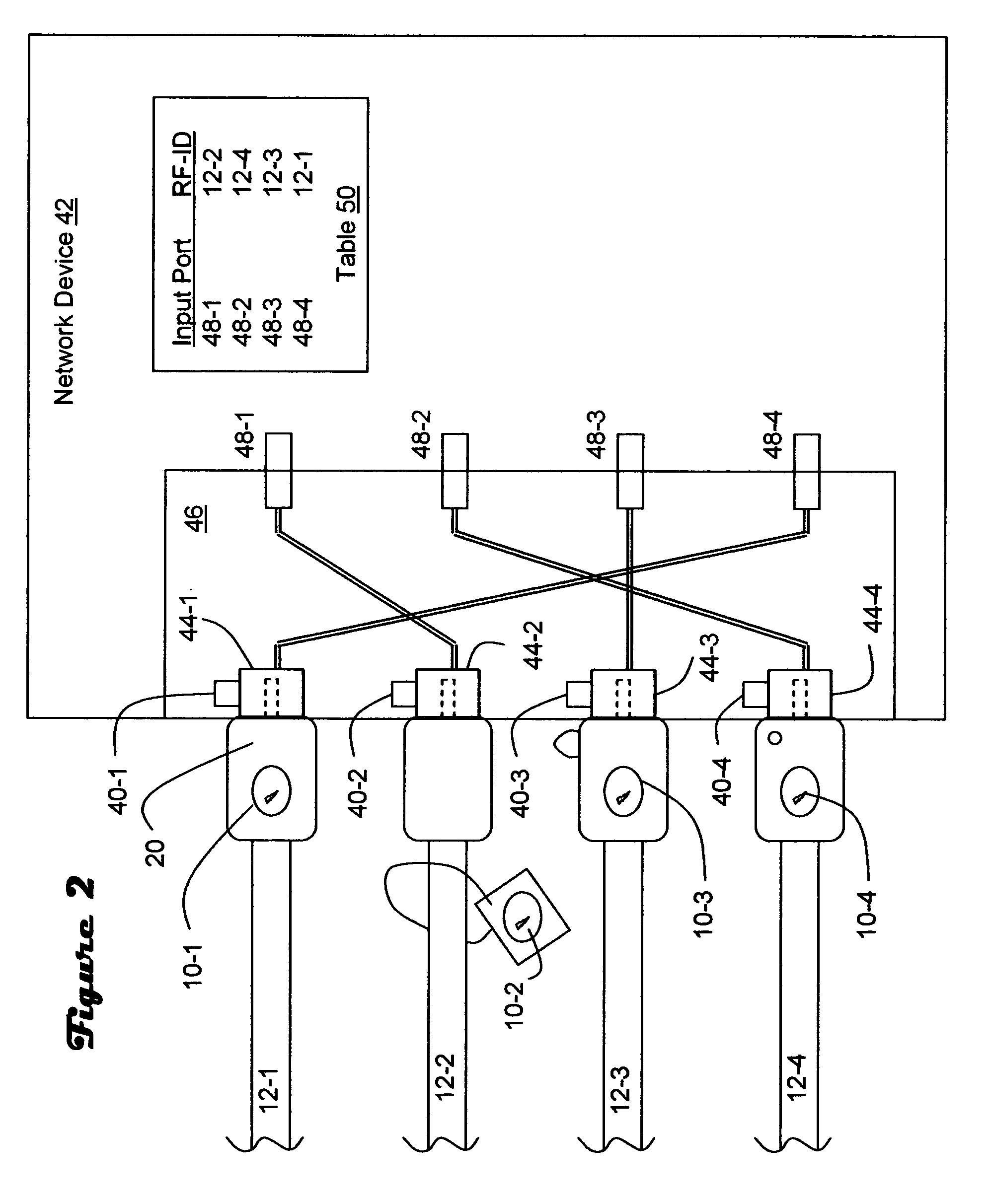RF-ID for cable management and port identification
a technology of port identification and cable management, applied in the field of optical and electrical cabling, can solve the problems of high cost of space in these environments, physical tags may become separated from cabling, and equipment maintenance costs, and achieve the effect of facilitating equipment maintenance and installation and further facilitating search
- Summary
- Abstract
- Description
- Claims
- Application Information
AI Technical Summary
Benefits of technology
Problems solved by technology
Method used
Image
Examples
Embodiment Construction
[0012]Referring to FIG. 1, RF-ID tags are employed to identify and distinguish cabling. An RF-ID tag 10-1, 10-2, 10-3, 10-4 is affixed to each cable of a plurality of cables 12-1, 12-2, 12-3, 12-4. In order to facilitate subsequent connection of the cable, the RF-ID tags are affixed proximate to each end of the cable. For example, the tag 10-1 may be embedded in a connector 20 positioned at the end of the cable. Alternatively, the RF-ID tag 10-2 may be mounted on a physical tag 22 clipped-onto or around the cabling 12-2 proximate to the connector. The embedded RF-ID tag may be preferable for new installations, while the RF-ID tag which can be attached in the field may be preferable for retrofit installations.
[0013]Each RF-ID tag 10 includes stored data which uniquely identifies the cable to which the tag is affixed. In particular, each tag may store for transmission 64–128 bits of data consisting of multiple fields and sub-fields. The cable identification information stored in each ...
PUM
 Login to View More
Login to View More Abstract
Description
Claims
Application Information
 Login to View More
Login to View More - R&D
- Intellectual Property
- Life Sciences
- Materials
- Tech Scout
- Unparalleled Data Quality
- Higher Quality Content
- 60% Fewer Hallucinations
Browse by: Latest US Patents, China's latest patents, Technical Efficacy Thesaurus, Application Domain, Technology Topic, Popular Technical Reports.
© 2025 PatSnap. All rights reserved.Legal|Privacy policy|Modern Slavery Act Transparency Statement|Sitemap|About US| Contact US: help@patsnap.com



